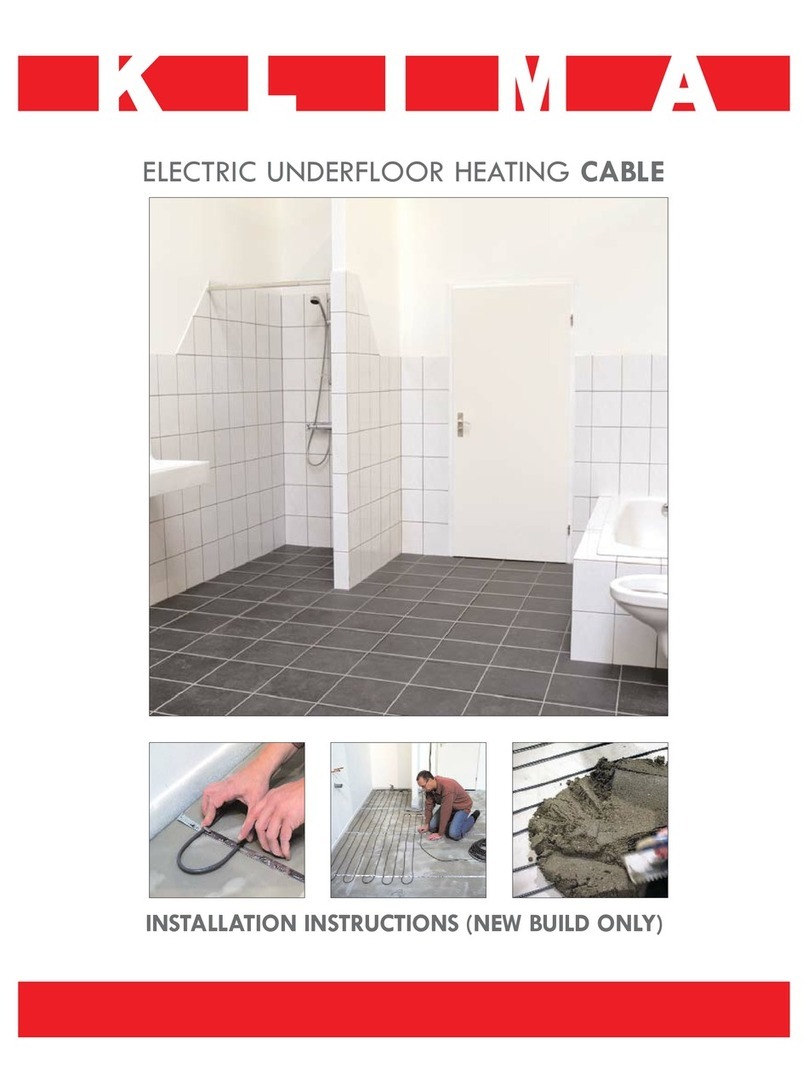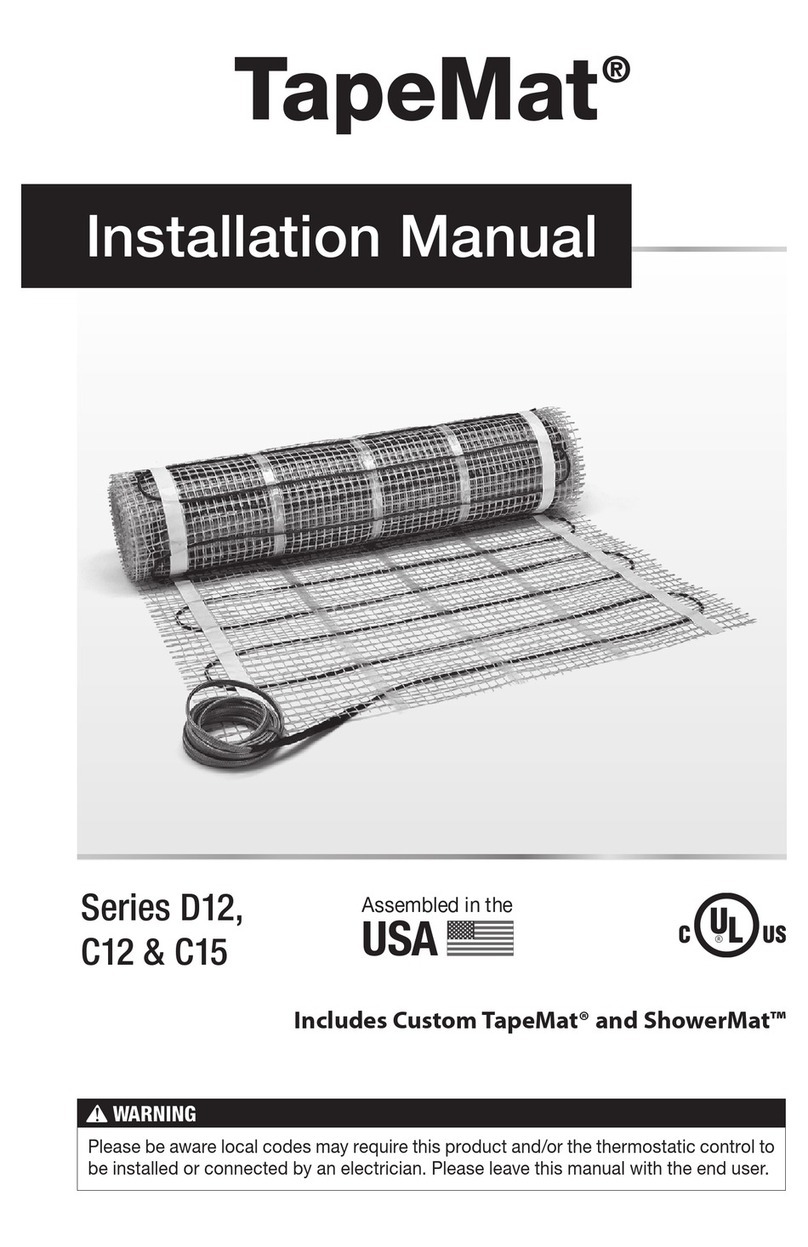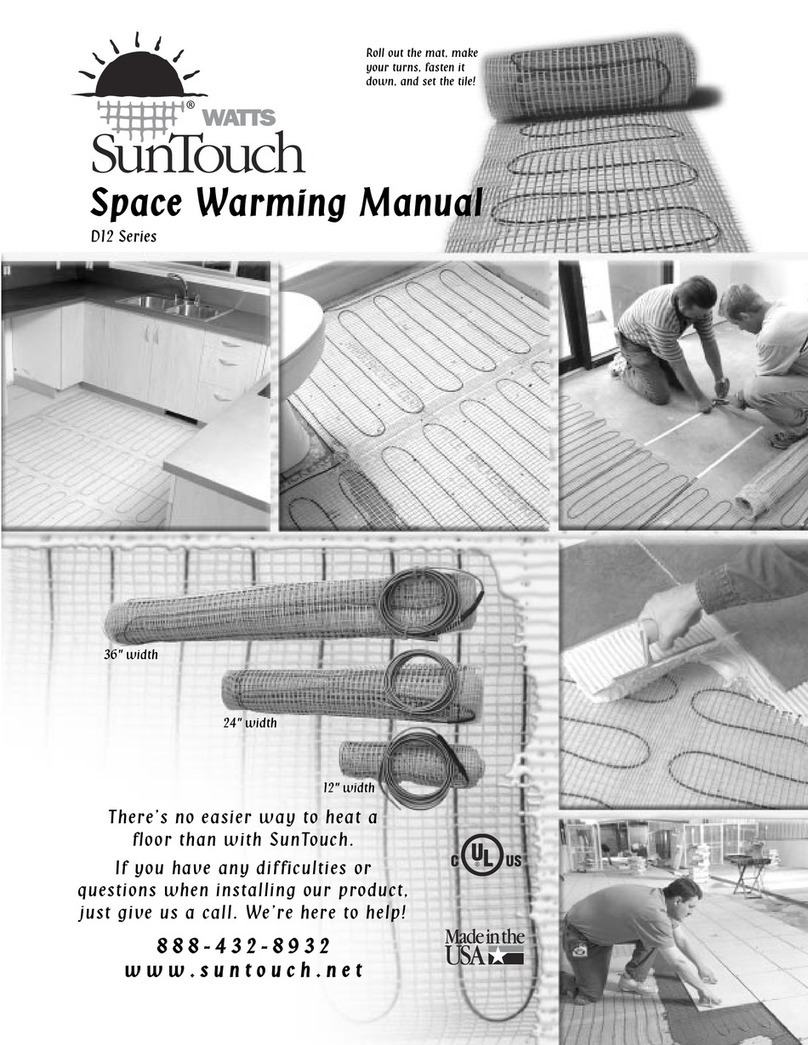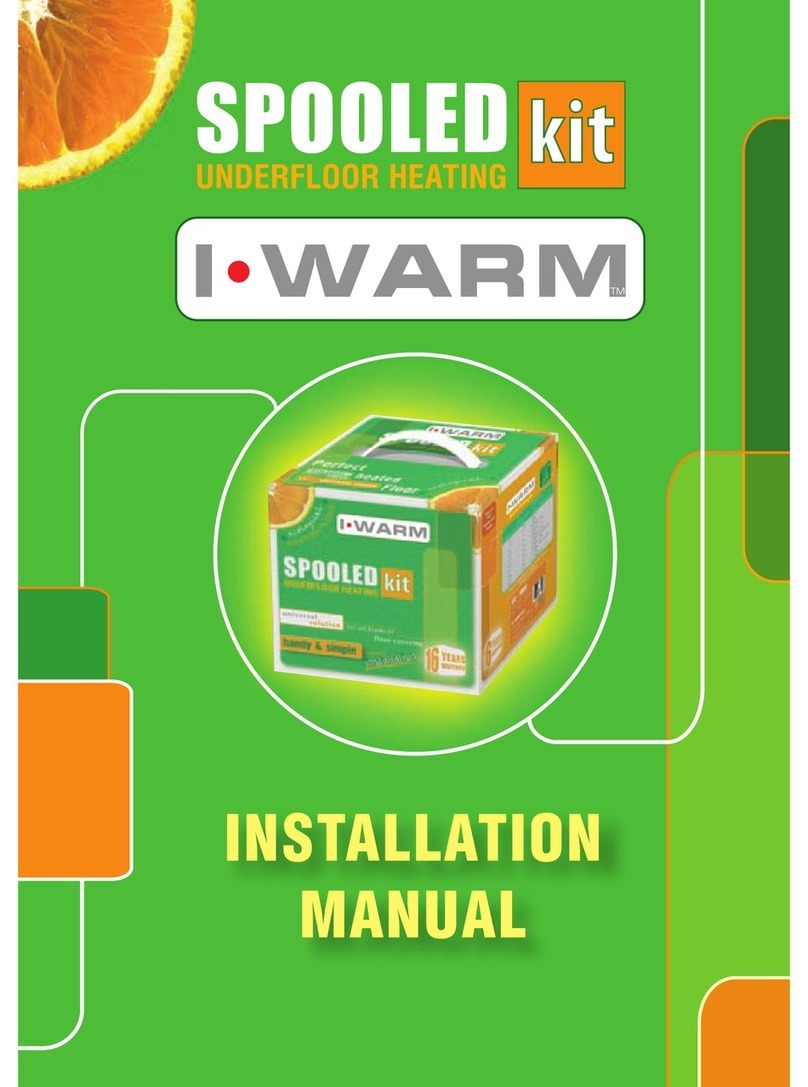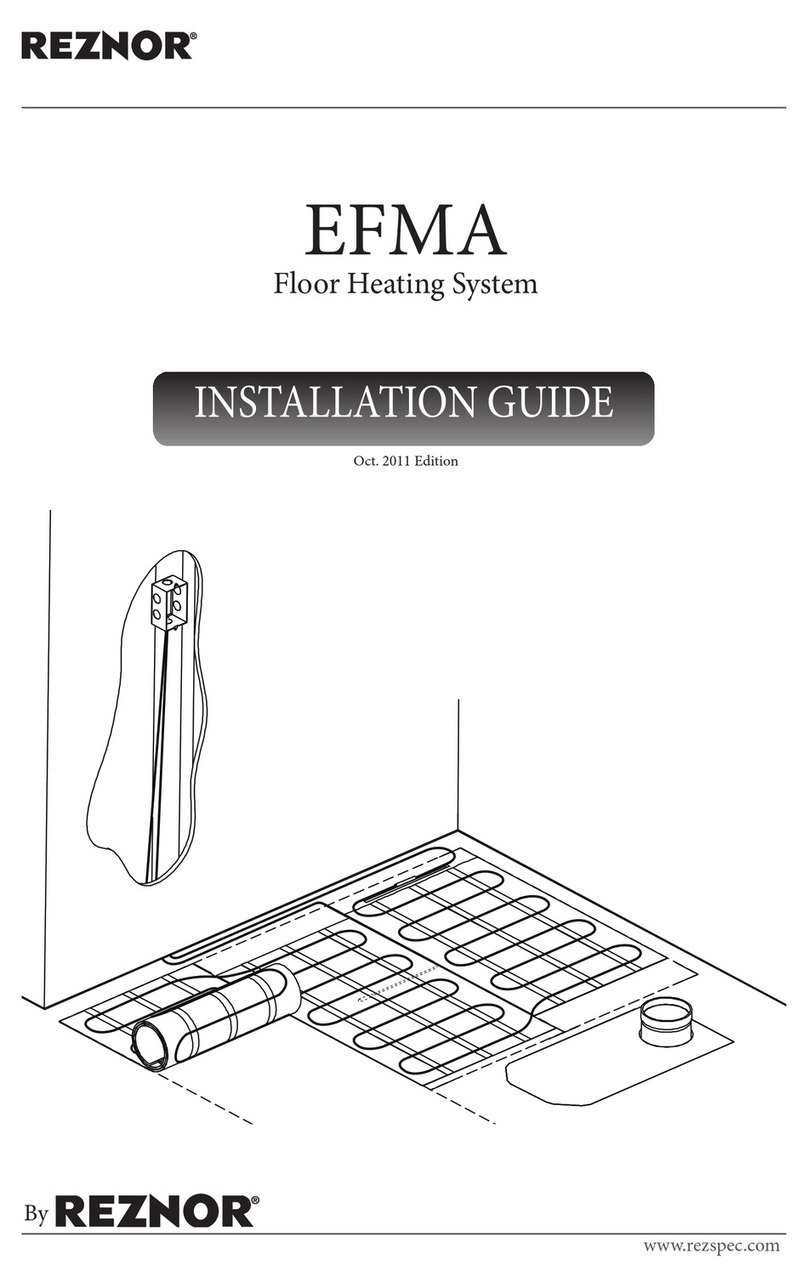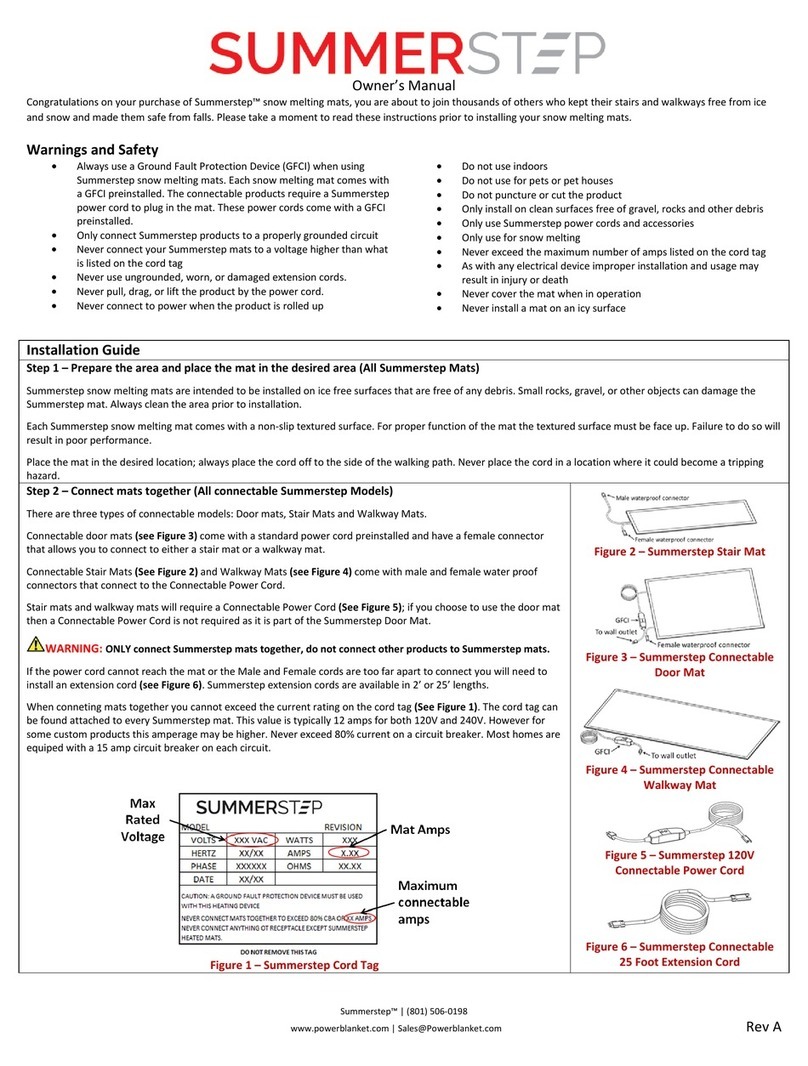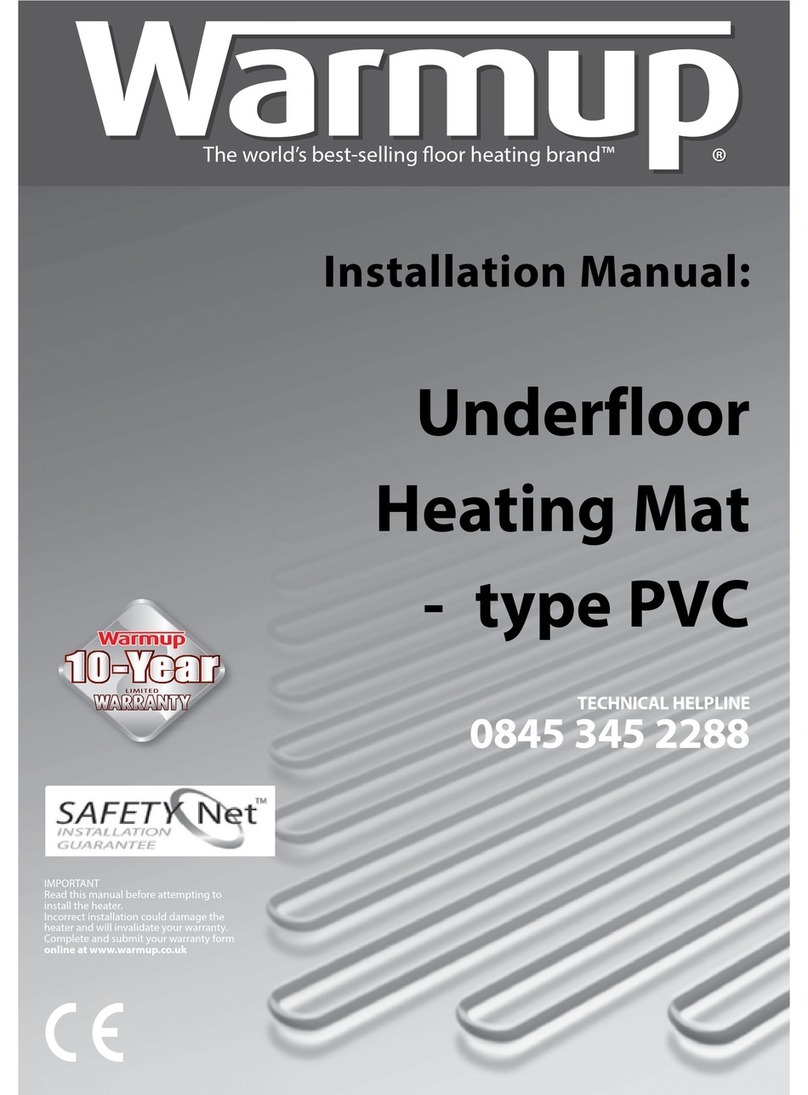
SunTouch TapeMat Installation Manual 3
As with any electrical product, care should be taken
to guard against the potential risk of fire, electric
shock, and injury to persons. The following cautions
must be observed:
NE VER install TapeMat under carpet, wood, vinyl, or
other non-masonry flooring without embedding it
in thin-set, thick-set, or self-leveling mortar.
NE VER install TapeMat in adhesives or glues
intended for vinyl tile or other laminate flooring. It
must be embedded in polymer-modified mortar.
NE VER cut the heating wire. Doing so will cause
dangerous overheating and will void the warranty.
The power lead may be cut shorter if necessary, but
never remove completely from the heating wire.
NE VER bang a trowel or other tool on the heating
wire. Be careful not to nick, cut, or pinch the wire
causing it to be damaged.
NE VER use nails, staples, or similar to fasten the
heating wire to the floor.
NE VER attempt to repair a damaged heating wire,
splice, or power lead using unauthorized parts. Use
only factory authorized repair parts and methods.
NE VER splice one mat heating wire to another mat
heating wire to make a longer mat. Multiple mat
power leads must be connected in parallel in a
junction box or to the thermostat.
NE VER install one mat on top of another or overlap
the heating wire on itself. This will cause
dangerous overheating.
NE VER forget to install the floor sensor included with
the thermostat.
NE VER install TapeMat in any walls, or over walls or
partitions that extend to the ceiling.
NE VER install mats under cabinets or other built-
ins having no floor clearance, or in small closets.
Excessive heat will build up in these confined
spaces, and the mat can be damaged by fasteners
(nails, screws, etc.) used to install built-ins.
NE VER remove the nameplate label from
the power leads. Make sure it is viewable for
inspection later.
NE VER extend the heating wire beyond the room or
area in which it originates.
NE VER allow a power lead or sensor wire to cross over
or under a heating cable. Damage could result.
AL WAYS completely embed the heating wire and
factory splices in the floor mortar.
AL WAYS maintain a minimum of 2" spacing between
heating wires.
AL WAYS pay close attention to voltage and amperage
requirements of the breaker, the thermostat, and
the TapeMat. For instance, do not supply 240 VAC
power to 120-VAC TapeMat as damage will result.
AL WAYS make sure all electrical work is done by
qualified persons in accordance with local building
and electrical codes, Section 62 of the Canadian
Electrical Code (CEC) Part I, and the National
Electrical Code (NEC), especially Article 424.
AL WAYS use copper only as supply conductors to the
thermostat. Do not use aluminum.
AL WAYS seek help if a problem arises. If ever in
doubt about the correct installation procedure to
follow, or if the product appears to be damaged,
the factory must be called before proceeding with
the installation.
Installation must be performed by qualified personnel,
in accordance with local codes and standards. A licensed
electrician is recommended. Read these important
warnings and all installation instructions prior to
installation. Failure to do so can result in fire, shock,
property damage, personal injury, and/or death.
CAUTIONS!
ReAd BefORe INSTAllINg TApeMAT
Table 1



